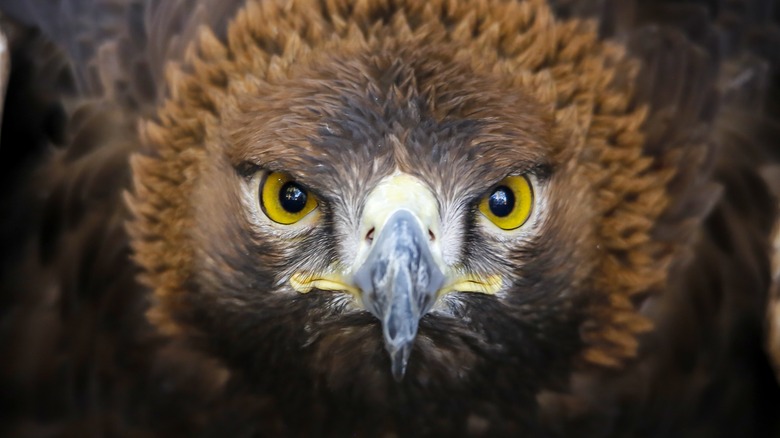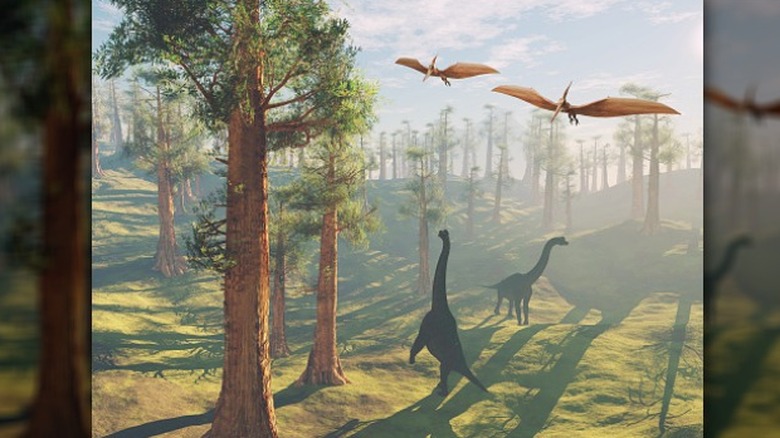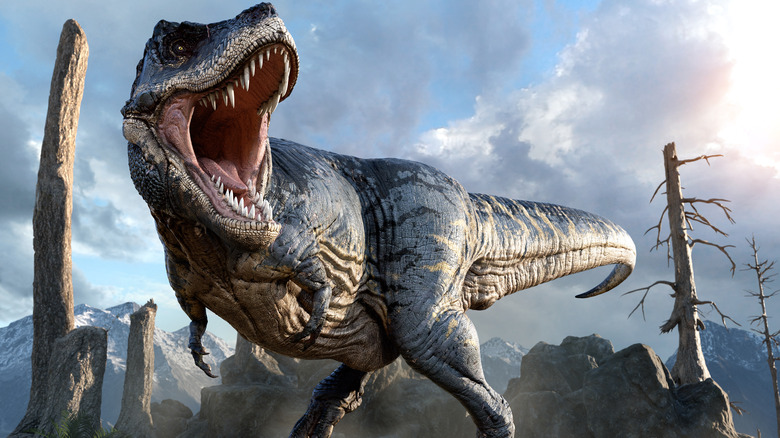How A 120-Million-Year-Old Fossil Could Bridge The Evolutionary Gap Between Dinosaurs And Birds
New evidence of a possible missing link between dinosaurs and birds may have been found, according to a study published in January, 2023 in Nature Ecology & Evolution. Though more research is required to be certain, it's now widely accepted among paleontologists that modern-day birds evolved from certain theropod dinosaurs, according to the UC Museum of Paleontology at the University of California at Berkeley. Among other evidence, the bird-dino theory was drawn from fossil discoveries that show some dinosaurs may have had feathers as well as other bone and anatomical similarities shared between modern birds and other known dinosaur species.
Prior to the 2023 study from a team of researchers at the Chinese Academy of Sciences in Beijing, nothing in the fossil record provided a direct link between the two clades, or groups of organisms believed to share a common ancestor. In other words, no hard proof existed until now of an ancient dinosaur-bird connection caught mid-transition — which would have been gradual instead of a sudden transformation. The discovery written about in Nature Ecology & Evolution also introduces an entirely new dinosaur genus and species called Cratonavis zhui, a creature previously unknown to science described by some as a Tyrannosaurus Rex-modern bird hybrid (via Sci.News).
The complete fossil specimen came from northeastern China
The Chinese complete fossil discovery that provides possible evidence of a direct link between birds and dinosaurs in the midst of incremental evolutionary change was found flattened between rocks in the Jiufotang Formation, where many other ancient bird and dinosaur fossils have been recovered, as Science News writes. The fossil discovery dates from the Cretaceous period (rendered above), which lasted from around 145 million years ago to roughly 66 million years ago, as Britannica explains.
Speaking with Sci.News, Dr. Min Wang, who co-authored the study on the Jiufotang Formation findings, explained the Creataceous period is marked by an incredible diversification of land-based vertebrates and early birds as they slowly diverged from their theropod ancestors. It's from around this same time that science has observed early birds develop the bauplan — or body structure — of modern counterparts, Dr. Wang said. The most crucial part of the Jiufotang Formation fossil study, though, is what it told scientists about the development of modern bird skull structure.
The Cratonavis zhui was about the same size as a dove
As Science News goes on to report, the Cratonavis zhui was roughly the same size as a dove but characteristics of its skull were similar to a T. Rex (pictured). The Cratonavis zhui belongs to the jinguofortisids, or an only recently-discovered group of avian life in the early stages of the theropod-to-bird transition. The proto-avian discovered in China had an oversized scapula, or large shoulder blades to possibly help it fly with such an oversized, heavy head. There's also a backward hallux similar to modern birds of prey, which in modern examples is much smaller.
The Cratonavis zhui had teeth, which itself is not uncommon for proto-birds from this period. Otherwise, though, the structure of the skull is strikingly similar to T. Rex, a theropod. Study co-author, Dr. Zhiheng Li, said (via Sci.News) "The primitive cranial features speak to the fact that most Cretaceous birds such as Cratonavis zhui could not move their upper bill independently with respect to the braincase and lower jaw, a functional innovation widely distributed among living birds that contributes to their enormous ecological diversity."


